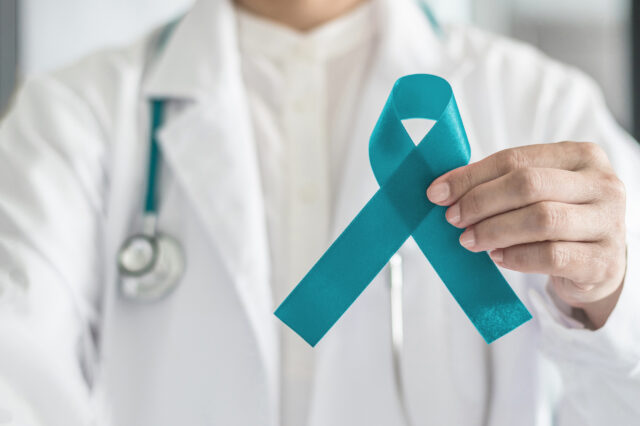Ovarian Cancer: Symptoms, Risks and Treatments
According to the American Cancer Society, ovarian cancer ranks fifth in cancer deaths among women. A woman’s chances of being diagnosed are 1 in 78.

According to the American Cancer Society, ovarian cancer ranks fifth in cancer deaths among women. A woman’s chances of being diagnosed are 1 in 78. The disease is often detected at its later stages because the initial symptoms may not be noticeable or attributed to other common conditions.
Dr. Daniel Benrubi, a University of Florida assistant professor of obstetrics and gynecology and gynecologic oncologist at UF Health Jacksonville, provided insight into ovarian cancer symptoms, early detection and treatment options.
What is ovarian cancer?
Ovarian cancer is cells on the ovaries that have uncontrolled growth and become cancer cells. These cells then spread throughout the pelvis and abdomen and can potentially become terminal if not caught early on.
There are three common types of ovarian cancer.
- Epithelial is the most common and tends to be found in older women in their 60s-70s.
- Stromal is usually detected earlier on compared to the other types.
- Germ cells tend to be found in younger women and detected during treatment.
What are some common causes or symptoms?
There isn’t a particular or known cause for ovarian cancer. Some signs or symptoms include abdominal cramping and pelvic pain, bloating in the abdomen, getting full early when you eat, urinating more frequently and nausea.
Why are symptoms for ovarian cancer often misdiagnosed early on?
Since there is no official screening to detect cancer early on, the symptoms are sometimes linked to gastrointestinal issues because of the bloating and cramping. Ovarian cancer cannot be seen with a pap smear. But it takes educating more people to consider talking to their OBGYN about these symptoms and issues to get imaging done, which can help get the proper diagnosis.
What are some risk factors for ovarian cancer?
Women who are more at risk typically have a family history of ovarian cancer. A genetic mutation related to Lynch Syndrome can also put you at higher risk. Women who are middle-aged and older also tend to be at higher risk as well.
What are some treatment options?
Surgery is the most common treatment. It can vary from woman to woman depending on what stage cancer she is diagnosed with and also her age. We perform a hysterectomy to remove the ovaries infected with cancer. Sometimes we recommend chemotherapy depending on the cancer stage. Chemotherapy may take place before or after surgery. Typically, recovery from the surgery takes about six weeks.
If the patient is younger, we have fertility-sparing options. One of those is only to remove the infected ovary and leave the uterus and uninfected ovary when possible.
Potential side effects from the surgery include early menopause, pain at the incision site and risk of infection and injury to the bladder. There can also be chances of the cancer returning. We watch it closely for several years after surgery. We strive to help women manage these post-surgery issues as best we can.
What can be done to decrease the risk of ovarian cancer?
Not much, but birth control may help decrease risk factors. Patients should be educated on symptoms and, if they have any of those symptoms, should speak with their OB-GYN. Medical imaging can help provide a precise diagnosis.
Learn more about Dr. Benrubi and his specialization in ovarian cancer at: https://ufhealthjax.org/doctors/3384/isidore-benrubi/.
About the author
